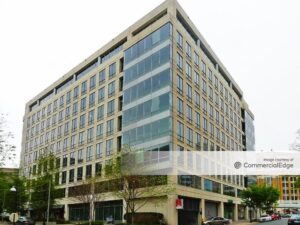Rising Insurance Costs and the Power of Risk Management
The real estate market will continue its tumultuous ride heading into 2024. Escalating business costs, weather-related catastrophes, high interest rates, nuclear verdicts and crime will persist, impacting profitability and burdening the industry. Reduced demand for office space will also have an impact as real estate owners and investors pivot, seeking new uses for commercial spaces.
With all these variables at play, commercial real estate owners and investors who harness the power of risk management can stay ahead and ride out the year ahead of the game.
Economic challenges and unpredictability are threats to profits and some of the most commonly identified risks to the bottom line, according to respondents of HUB’s Outlook 2024 Executive Survey. By mid-2023, demand for retail and multifamily housing decreased and office vacancy rates were at 13.1 percent, according to a National Association of Realtors market insights report. The one area in the market that’s performing well—despite the current uncertainties noted above—is the industrial sector. Rents increased 8.9 percent year-over-year in 2023 due to manufacturing and e-commerce growth, the same report shows.
Location is also a factor. Certain markets such as Florida and Dallas are thriving due to new building starts and low vacancy rates while cities such as San Francisco are suffering. Rising insurance costs also threaten profits, particularly in areas susceptible to weather-related catastrophes, which are experiencing double- or triple-digit premium increases.
Ways to mitigate risk
Assessing insurance coverages and improving risk management strategies can help profitability. Take a closer look at prevention strategies to reduce potential losses on your properties. This includes increasing security on properties, providing extra training for personnel and maintaining properties to help avoid potential injuries onsite as well as to diminish crime.
Shoring up properties to protect against weather-related events will also help—especially for those with higher deductibles or that are self-insuring. In addition, contending with cybercriminals by implementing multi-factor authentication protocols and endpoint detection and recovery can protect against cybercrime.
Contending with the labor shortage will also continue in 2024. The employee turnover rate for property management positions is at 33 percent, according to the National Apartment Association. Failing to fully staff property maintenance positions can degrade properties and result in greater exposure to expensive claims and litigation.
Real estate owners and operators must not only address their own staffing issues but how this could impact the businesses renting from them as well—particularly those in hospitality and retail — who may not be able to pay rent as a result.
To better recruit and retain staff, real estate owners and operators should offer personalized benefits informed by data and analytics, which can help deliver quality employee experiences resulting in improved employee engagement and increased productivity.
Yet according to HUB’s 2024 Outlook Executive Survey, only 40 percent of the real estate respondents offer personalized benefits. Also just 40 percent offer lifestyle and alternative insurance options to employees. Adding personalized benefits to improve employee wellbeing like providing policies that support extended personnel leave for new and existing employees or offering specialty insurance could generate a competitive advantage for real estate owners and operators with staffing issues.
Coping with elevated costs and rates
Having a strong workforce is essential to creating a culture of safety, controlling insurance costs and protecting profits, which owners and operators will need in the year ahead. Commercial real estate insurance costs will worsen as the insurance industry continues to try to control costs and improve profitability after suffering a $26.9 billion net underwriting loss in 2022.
In addition, litigation expenses, increased replacement costs on damaged properties and the increase in weather-related catastrophes across the country are primary factors for the increased insurance rates, with those rates expected to increase across many coverages in 2024. Property rates will increase up to 15 percent or more for high-risk properties; catastrophic perils coverage could increase more than 30 percent.
Not only are rates increasing but some investors might find it cost-prohibitive to offload their risk. And property insurance capacity is scarce in areas where real estate owners need it most. Some states will introduce legislation or update building codes in response to the insurance capacity challenges.
Real estate owners and operators should consider alternative risk transfer vehicles to cope with rising rates. This includes deductible aggregates, contingent capital arrangements, tenant default captives, spot captives and self-insurance. And, if this hasn’t been done already, owners and operators should have catastrophe modeling done on their properties to confirm insurance covers the right risks associated with each building. This can reduce insurance costs and identify exposures that could impact acquisition strategies.
Taking steps to mitigate risk and improve coverage will help those in the commercial real estate business overcome challenges in 2024.
James “Chip” Stewart is the corporate chief sales officer and practice leader for global insurance brokerage Hub International’s real estate specialty in North America.
The post Rising Insurance Costs and the Power of Risk Management appeared first on Commercial Property Executive.





